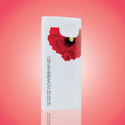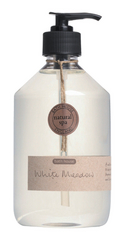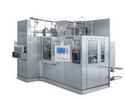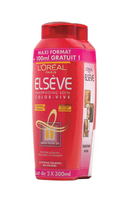More than a cosmetic makeover
15 January 2007The cosmetics and toiletries sector shows growing evidence of ever more sophisticated brand differentiation; reassurance of first-user guarantees and hygienic production processes; and, underlying it all, the ability to “read the market” and predict upcoming trends. Jo Hunter reports
The line between pharmaceutical and “beauty” products has blurred, not only in the appearance and function of the packaging used, but also in the production process for high quality branded lotions, creams and gels. At the top end of the market there is all to play for when people will pay “top-dollar” prices for excellence.
Rommelag of Switzerland produces machinery aimed at the pharmaceutical industry, but over the past decade its safe filling systems have entered the toiletries and cosmetics market with some Galénic, La Roche Posay, Danone and L'Oréal brands. "These markets are growing quite rapidly for the company," Christophe Benoit, regional sales manager of Rommelag, told Packaging Today at the Emballage packaging exhibition in Paris in November. In a typical application for the company's machines, a day-and-night cellulite treatment comprising two different formulae are alternately filled into small volume doses on the same line into tubes in a sterile environment. An example is Elancyl - a smoothing concentrate for stubborn cellulite - produced in France by contract packers Unither Normandy and Laboratoires Gilbert. Preservative-free products and other sensitive formulations, meanwhile, can be hygienically packaged on Rommelag's Bottelpack aseptic machines, which are designed to cleanroom class A (US-Class 100) standards. The fully automatic machines work either discontinuously with one or two moulds or continuously with rotated mould chains. Containers can be filled at up to 30,000/hr in sizes from 0.1ml.
Hygienic aseptic manufacturing was already a speciality of French company Serac, mainly in dairy foods, when in 1996 it began to apply its knowledge to the cosmetics and pharmaceutical markets at a newly acquired Spanish operation. It introduced three new machines to visitors to Emballage in November. The Cronos filling and capping line is designed to accommodate multiple product, format and cap changes carried out daily; pots and bottles ranging from 50 to 350mm high and from 5 to 100mm in diameter can be accommodated.
Métis is a rotary filling/capping machine offering high work rates of up to 600 containers/min for thick liquid content such as shampoo and shower gel. A large glazed booth and an automatic closed-loop “dry” cleaning system feature in the aesthetic machine design. Lastly, the “straightforward”, programmable, servo-motor controlled Hélios has made user comfort the top priority for filling a variety of liquid, foamy and viscous product types.
For the trend-conscious visitor to Emballage there were sneak previews of emerging processes that could become big stories in 2007 for developers and customers in the personal care and beauty sectors.
Among these were textured sleeves (from Sleever International); a machine for enamel screen printing for shaped bottles in up to eight colours on glass from France's Saga Décor, PVC shrinksleeves that give 69% shrink for economy and speed (Ineos Films); heavy-duty and highly flexible neckbands and shrinksleeve labels (PDC Europe); and a filling technique that colour-separates pastes and creams to create patterns in clear tubes and jars for visual impact.
An advertising-like medium
According to the latest Emballage Pack Vision study, modern packaging is acting as a communicator and an advertising-like medium in its own right; it can “aspire to convey product superiority, to instantaneously seduce or convince the consumer to buy. The pack that tells a credible story wins over its audience”.
Quite a story lies behind the caps that RPC beauté produced for bottles and jars in the Estée Lauder Cyber White skincare range. Through various twists and turns their development led to a new overplating process for plated parts, which the company says has the potential to enable cost-effective design and production of very high quality packaging for cosmetic and beauty applications such as high-end fragrance caps or colour cosmetics items.
The story begins with RPC beauté bringing the Lauder look up-to-date at a brushstroke with a special new electroplated shade of Champagne gold. This was combined with a blue tint for the overmould, via a transparent layer, to suggest a pharmaceutical link, and the clinical technical skill that went into developing the products.
The decision to use a three-material construction - ABS, Surlyn and PP - to overmould a plated part and thereby achieve both special visual effects and the necessary level of robustness required significant technical innovation.
A special new ABS resin compound replaced traditional ABS for greater resistance to heat and pressure in the overmoulding process, which would normally have damaged the plated part. During cooling, the plated section takes on insulating properties that slow the process, so RPC introduced a means to increase cooling efficiency and reduce cycle time. Due to the Surlyn material's high mass, the cap is still soft when taken from the moulds, but a handling process RPC developed removes each part without damaging or deforming the surface.
It is a story with happy ending. The finished closure has a higher overall visual quality thanks to the intimate contact between the plated surface and the Surlyn, which creates first-surface reflection. And the closure works better too as there is no risk of “misorientation” - any movement or separation of the two parts of the cap, even after repeated use.
Italy's Giflor knows how to cap things off nicely, both in niche and quality applications and with mass volume containers, with plastic caps designed “as part and parcel” of the toiletry pack to give a visually satisfying appearance. The company has contributed to “unique” packs for everyday and luxury personal care products, working with Acti Pak (France) EDP (Spain) and PET Power (the Netherlands).
The low profile of the caps, their colour, shape and one-hand, easy-open function has attracted the notice, and the business, of niche brands and volume customers, reports Giflor account manager Maximiliano Bettini.
For a happy Christmas story about a new company relishing its prospects in 2007 we turn to Vetroplas Packaging. It specialises in cosmetics and personal care markets and in its first year of trading was pleased to be asked by Space NK to package part of the apothecary brand's 2006 Christmas range - a gift set presented in PET bottles and caps (see also p12).
“When I set up Vetroplas in January 2006, I knew there was a gap in the packaging market,” says John Anderton, formerly managing director of M&H Plastics, now working with partner Amanda Thaxton-Key. “We believe we have a great collection of products to offer and I am very encouraged by the success we are achieving.” The Norwich-based firm distributes Eurovetrocap and CTL Packaging products comprising glass and plastic bottles, jars, closures and flexible tubes.
New division for RPC
A company's make-up has to be “just so” to perform and impress in a new target markets. Last year RPC beauté became the plastic packaging group's new division specialising in fragrance and colour cosmetics packaging and set out its stall for the first time at Luxe Pack in October “to demonstrate how manufacturers in the premium and mass market sectors can differentiate themselves in an increasingly crowded and competitive environment”.
July's acquisition of Crown Risdon Europe provided RPC beauté with new sites at Marolles near Le Mans in western France, with a sales office in Paris, and at Mozzate near Varese in northern Italy. A third location is RPC beauté Thornaby, formerly an RPC Bramlage-Wiko site. The division is managed by Denis Pandolfi, previously general manager of Crown Risdon Europe, and Henny Peters, general manager at RPC beauté Thornaby.
With something to prove at Luxe Pack, RPC beauté exhibited its Lancôme Color Fever lipstick tubes and Lancôme Hypnôse fragrance caps, both DuPont Gold Award winners. The RPC line-up also included the patented Reveal lipstick mechanism, Lacôste Touch of Pink and Touch of Sun collars and fragrance caps designed to closely mimic a glass appearance “at a fraction of the cost”, while the L'Oréal Paris Invincible Kiss Proof lipstick illustrated the first use of RPC's SlimGlide mechanism.
RPC beauté says all these examples of its expertise highlight the continuing trend towards the further upscaling of beauty packaging. “Brands are constantly looking to upgrade their packaging, both functionally and aesthetically,” says sales and marketing director Gérald Martines.
Sleever International's new Sleever Flexo UV UV flexo printing technique underwent 36 months' development to obtain the flawless image and text reproduction and special effects sought after for marketing purposes for printed sleeves to decorate cosmetics, perfumery and “parapharmaceutical” brands. Subsidiary Sleever Labels' technology can be used to undertake 10-colour back/front printing, with “super high quality quadri-chrome image definition, flawless half-tones and shades, and unequalled precision of texts”. A faster turnaround (¬two to three weeks) and 50% lower tooling costs are additional reported benefits. L'Or_al has tested and approved the technology, says Sleever.
The cosmetics, perfumery and toiletries segment is a prime target for a flourishing trade in forgeries and needs a means of protection that will not detract from a decorative presentation.
Sleever's Seelcap solution to the problem is akin to body armour; a tamper-proof device that offers the double benefit of self-promotion and self-protection. The packaging for Flower by Kenzo is the first application of the pack security system in the luxury perfumery market. As well as offering economical, easy to integrate protection, the floral decoration of the Kenzo bottle has added lustre thanks to the use of a high brilliance film.
Seelcap also incorporates protection against ultraviolet rays, to which the latest preservative-free, “rich in natural ingredient” formulations, are particularly sensitive. The OPS-TF-095-XB film from Sleever Technologies will not only, the company says, maintain the integrity of complex-shaped products, but also offers anti-dust and anti-static properties as well as a very high transparency. Seelcap can also be used with removable labels for barcode and content information.
Givenchy turned to Alcan Packaging Beauty of France for the clever and stylish packaging solution for Prisme Libre, which combines four different-coloured loose powders in the same container. The story of what goes into such a pack is testament to the level of attention to detail that catches the notice of a top brand.
The base of the case is in untreated crystal PMMA (polymethyl methacrylate), thin walls divide it into four cavities and registered black hot stamping features on one side of the powder case. The case's ABS bottom is ultrasound-welded to the base and four untreated PP caps close off the cavities in the base. The four openings are used for filling in the factory. A bottom label masks the caps.
On the underside of the base, in the centre of the cylindrical applicator housing, fine perforations forming the Givenchy brand logo release the powders gently from their cavities to fill the puff. Up until first use, a transparent label covering the perforations keeps the puff and case clean. The upper part of the case displays a transparent brand logo against a pink mirror-effect background. The black moulded, bi-injected PP screwcap has a black SAN edge and a central pink SAN window bearing a black hot-stamped Givenchy logo. A square mirror between the black and pink bi-injected part and the black screw section give the logo more depth. Finally, a transparent gloss varnish applied to the top of the cap completes the “haute couture” design.
Back in England, toiletries company The Bath House appointed Remploy Household and Toiletries to produce a liquid soap and bath soak for its natural spa range, with the decision apparently attributable largely to the impressive quality of Remploy's modern St Helens site.
“The level of cleanliness and order is evident the minute you walk in,” says Gareth Marshall, general manager at The Bath House, adding: “It feels more like a pharmaceutical facility.” Such a comment highlights brand owner expectations, and the deep scrutiny under which the whole manufacturing process is being placed these days.









